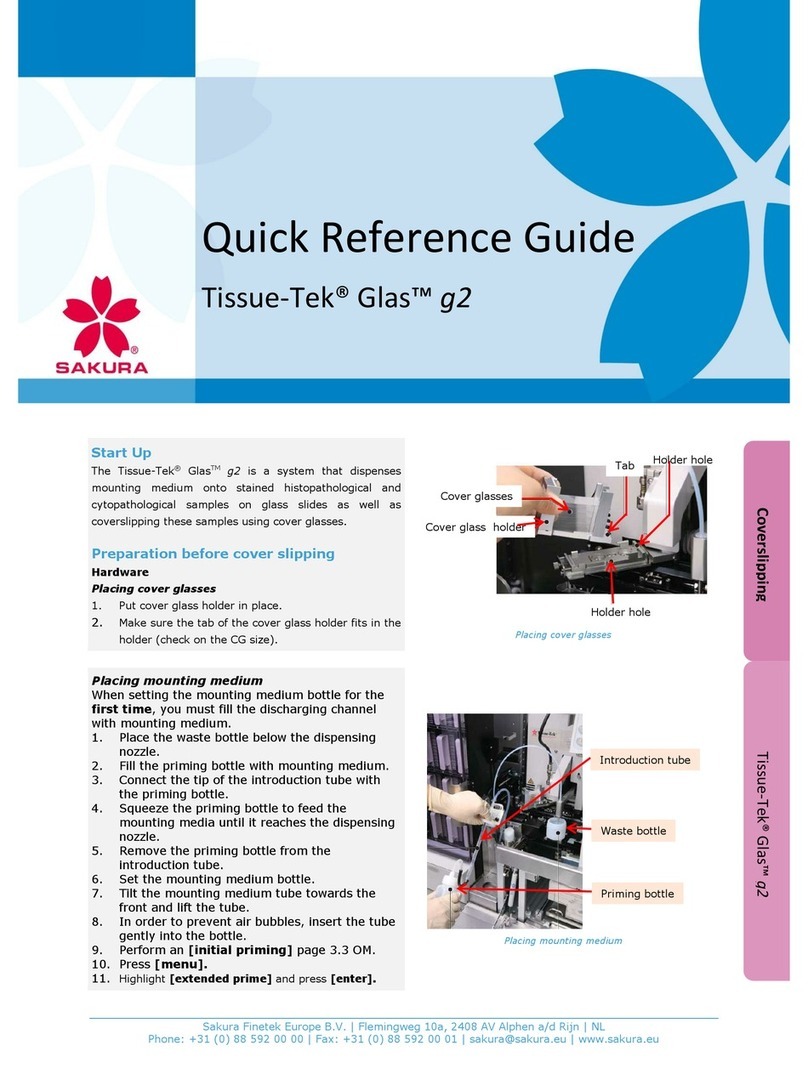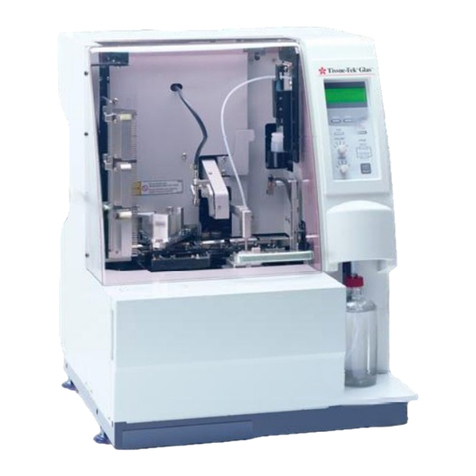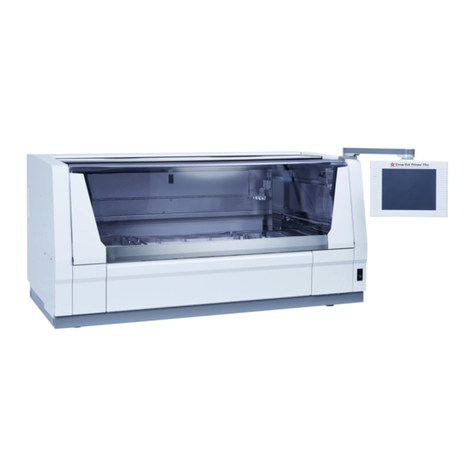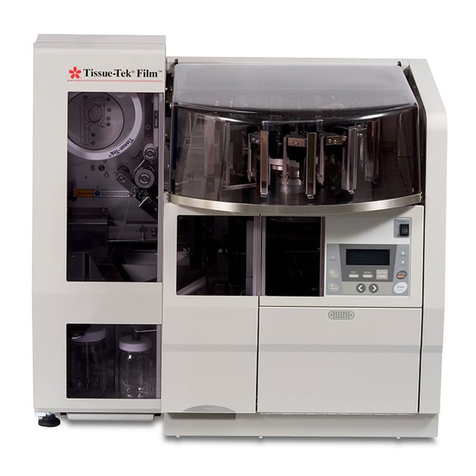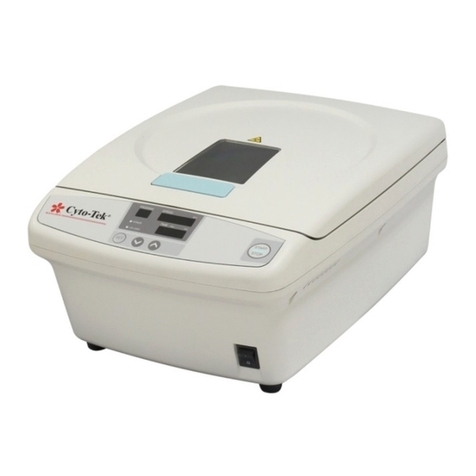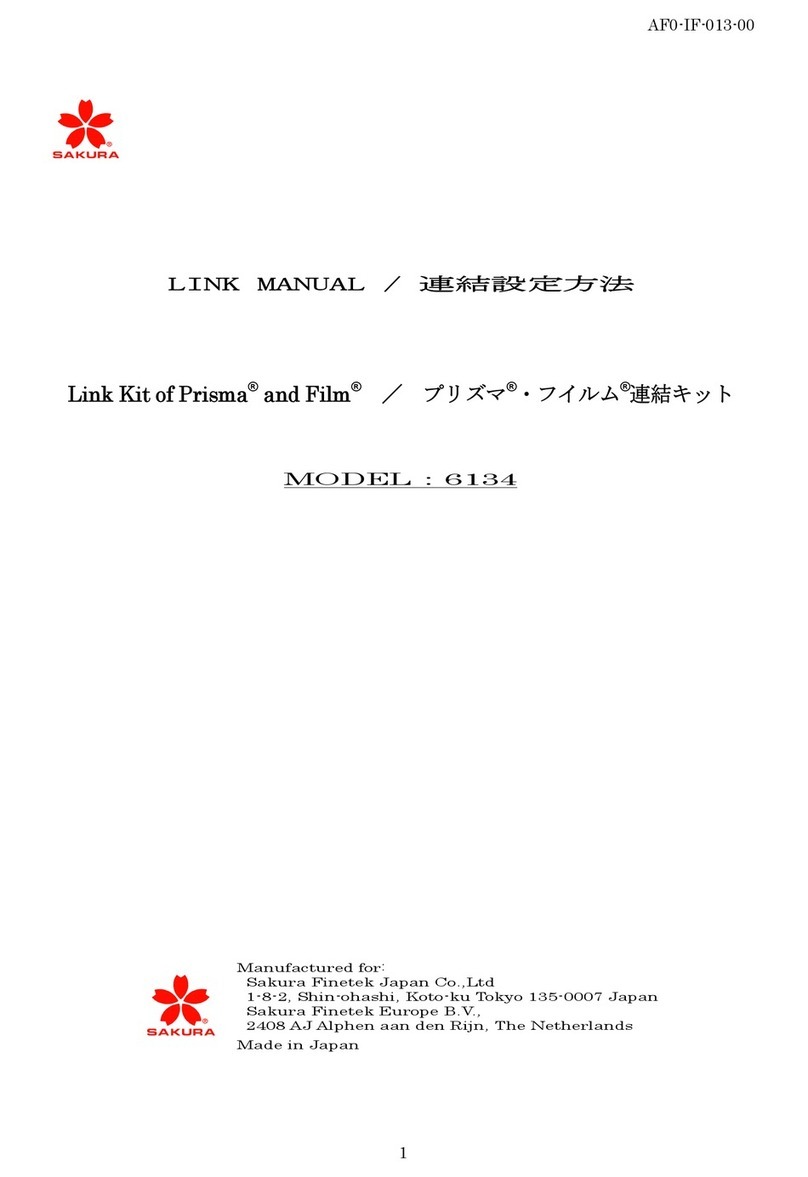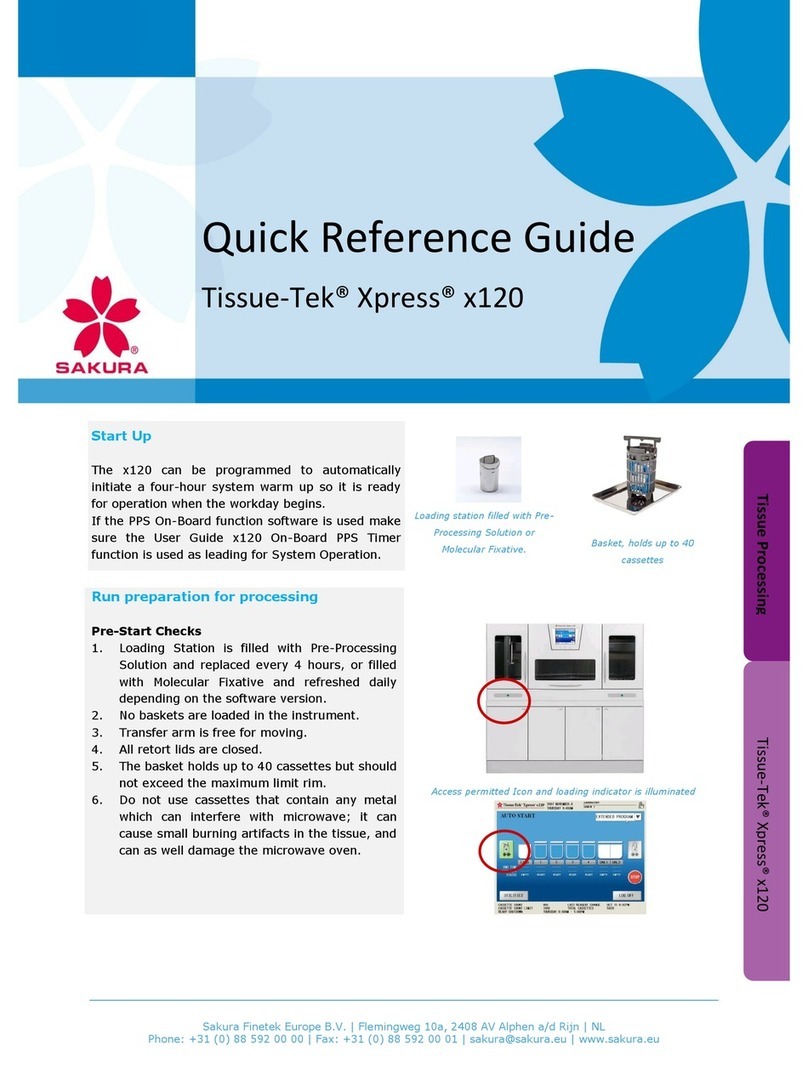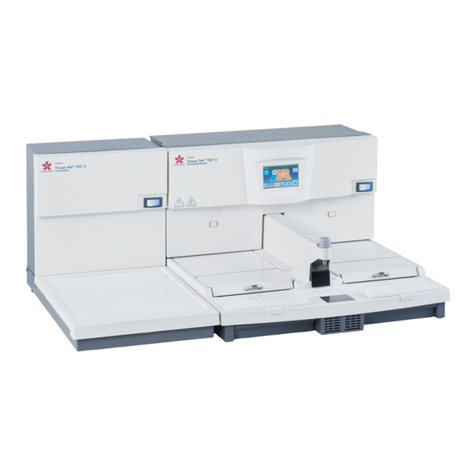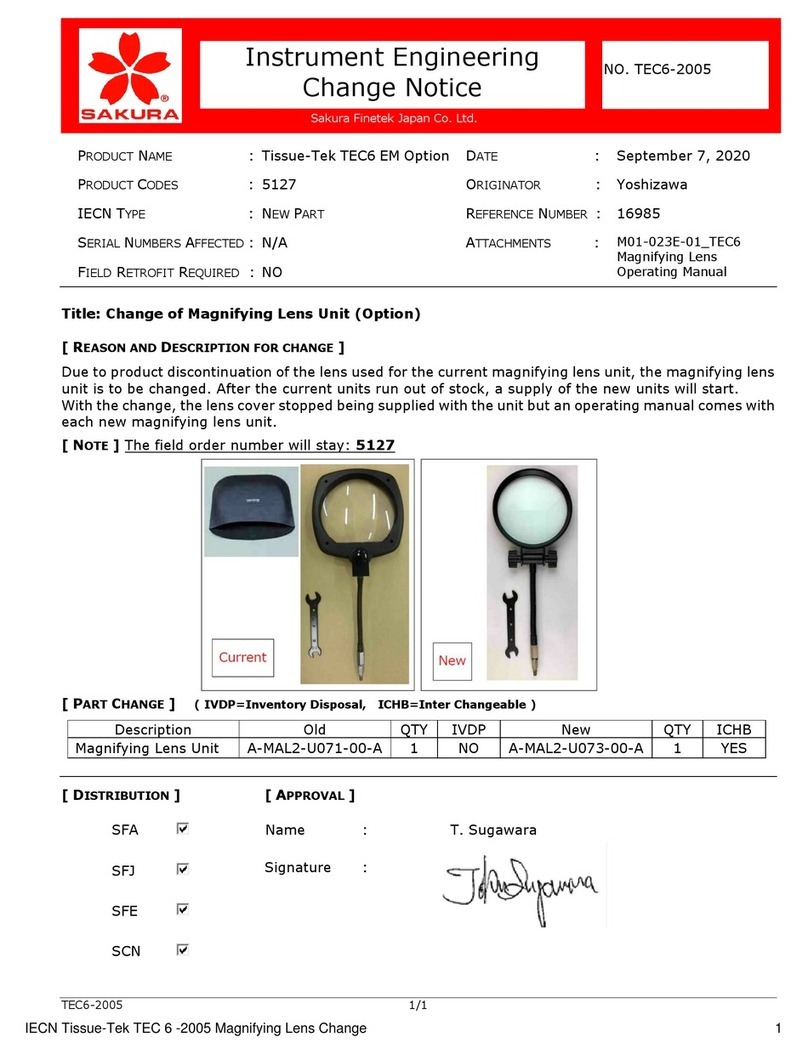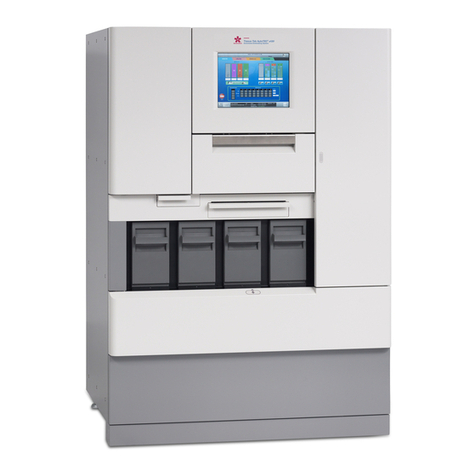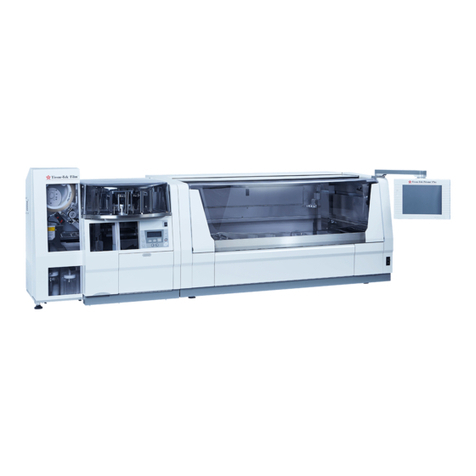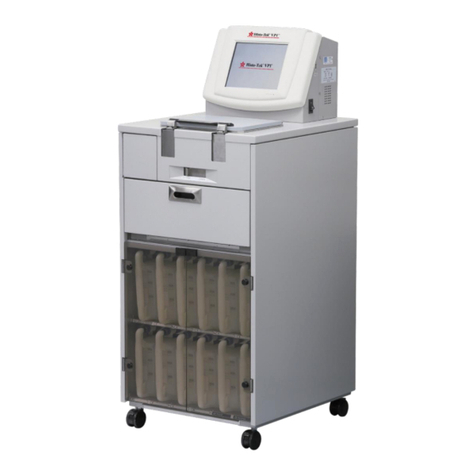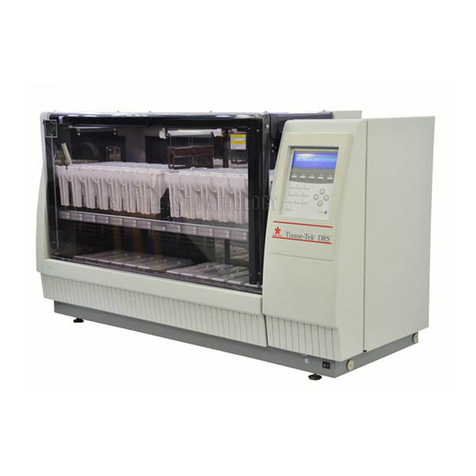Multiple runs with an identical program are started at the
same time by selecting more than one start station.
Pressing Start again will start the selected staining
protocol.
During process the permitted operations are limited. In
continuous mode the option to add more baskets and
start them with priority becomes available. The status of
the end stations and the individual runs can be checked
by respectivelypressing End station status or Detailed
monitor.
In order to pause a staining process, press Pause on
the left of the stain process screen. All runs will be
paused at this point. Press Resume to continue or
Abort and choose to cancel specific or all runs. When
eligible runs have been selected press Abort again to
stop their process. Open the hood at this point and
remove the aborted baskets. After closing the hood
again the Exit option becomes available. Selecting this
option will complete the abort operation and the system
will continue from the moment it was paused.
When a stain process is completed, the basket is stored
in an end station, program end (PE) station or placed in
the link station when a coverslipper is connected. When
the link station is occupied, the system will temporarily
place the basket in an end station.
Upon finishing a run, a notification window will appear
briefly informing the user to remove the finished baskets.
Access is gained by opening the door. Once all
completed baskets are removed and the door is closed
again, a confirmation window appears. Press Yes to
confirm the removal of the baskets. If the baskets are
not removed select No.
After all daily operations are completed close the lids on
all reservoirs to reduce evaporation of the solutions.
When reagents have been refreshed, the usage limit for
solution stations with a managed usage like runs, days
or slides can be reset from the stain process menu by
selecting the Reset Solution Usage Information button.
Any errors that might occur are logged and found in the
same menu as the Reset Solution Usage Information.
Touch the Log Off key at the bottom left of the screen
to log off from the instrument. This action can be done
even after a stain protocol has started. The only options
availablenow relate to checking the status of these runs.
